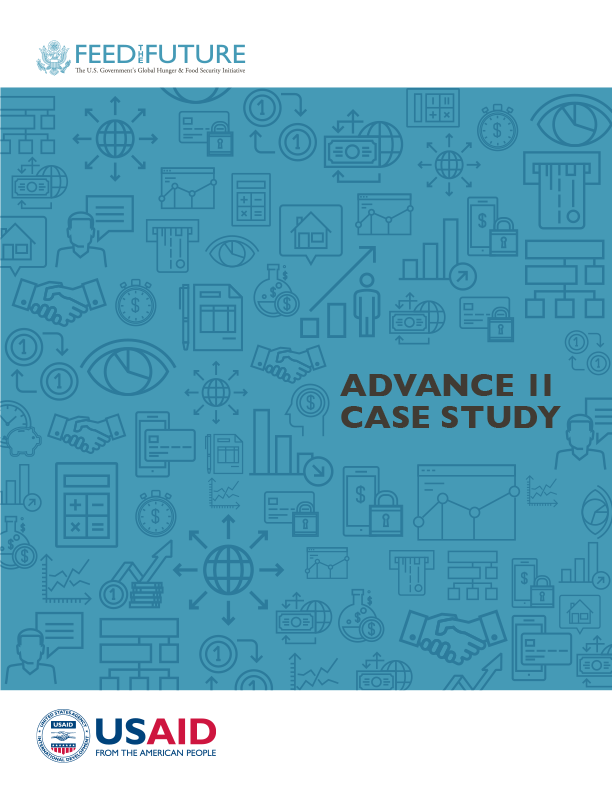- What We Do
- Agriculture and Food Security
- Democracy, Human Rights and Governance
- Economic Growth and Trade
- Education
- Environment and Global Climate Change
- Gender Equality and Women's Empowerment
- Global Health
- Humanitarian Assistance
- Transformation at USAID
- Water and Sanitation
- Working in Crises and Conflict
- U.S. Global Development Lab
Speeches Shim
![]() (7 MB) ADVANCE II Case Study
(7 MB) ADVANCE II Case Study
This case study is part of a series highlighting the integration of digital technologies into agricultural programs. Over the past ten years, and particularly over the past five, the use of mobile phones and Internet-based, digital tools in farming activities has sky-rocketed. This is largely due to the widespread adoption of mobile phones in developing and emerging markets, coupled with the increased spread of 3G and 4G connectivity. What has emerged is a broad set of digitally-based applications that have driven greater financial inclusion, more precision in agriculture, better data collection and analytics and more effective information dissemination. Agricultural organizations and programs are increasingly embracing these tools to advance their goals. Each case study in this series looks at different approaches to adoption and how the tools are impacting organizational culture, operations, and programming.
Globally, digital technologies such as digital financial services and information and communication technology (ICT)-enabled extension services have demonstrated an ability to transform agricultural markets. These technologies improve information delivery, streamline and reduce the cost of cash transactions between smallholder farmers and other value chain actors, and open up markets previously inaccessible to certain demographics, such as women.
Ghana is a target country under Feed the Future, the U.S. Government’s food security initiative. As the main value chain project of USAID/Ghana’s Feed the Future program, the Agricultural Development and Value Chain Enhancement II (ADVANCE II) Project aims to improve the livelihoods of 113,000 smallholder farmers by boosting the productivity of rice, maize, and soy value chains. The project is implemented by ACDI/ VOCA and three consortium partners (Technoserve, ACDEP, and PAB Consult), for a duration of four years (2014-2018). Building on pilots initiated under ADVANCE I, its predecessor program, ADVANCE II has integrated a full suite of digital tools into its programming. In doing so, the project aims to increase the earnings and security of the smallholder farmers it supports throughout Ghana.
In Ghana, agriculture contributes nearly 30 percent of GDP. Agriculture serves as the largest source of employment for Ghanaians, employing more than half of the total labor force. Eighty percent of agriculture in Ghana is conducted by smallholder farmers producing food and cash crops on an average of 1.2 hectares. While Ghana has recently been re-classified as a middle-income country, due in part to agricultural growth, economic development has been widely unequal. Despite an overall reduction in the poverty rate from 52 percent to 28 percent over the past 10 years, the northern regions have poverty rates nearly twice that of the south (USAID 2014). Similarly, the World Bank reports that while the number of the poor in southern Ghana declined by 2.5 million, it increased by nearly 1 million in northern Ghana (USAID 2014). For these reasons, Feed the Future in Ghana is specifically targeting its investments in the three northernmost regions of Ghana, including Upper West, Upper East, and Northern. Some activities also take place in the Brong Ahafo Region that lies above the 8th degree parallel, as this is where the majority of traders, aggregators processors, and buyers are located.


Comment
Make a general inquiry or suggest an improvement.